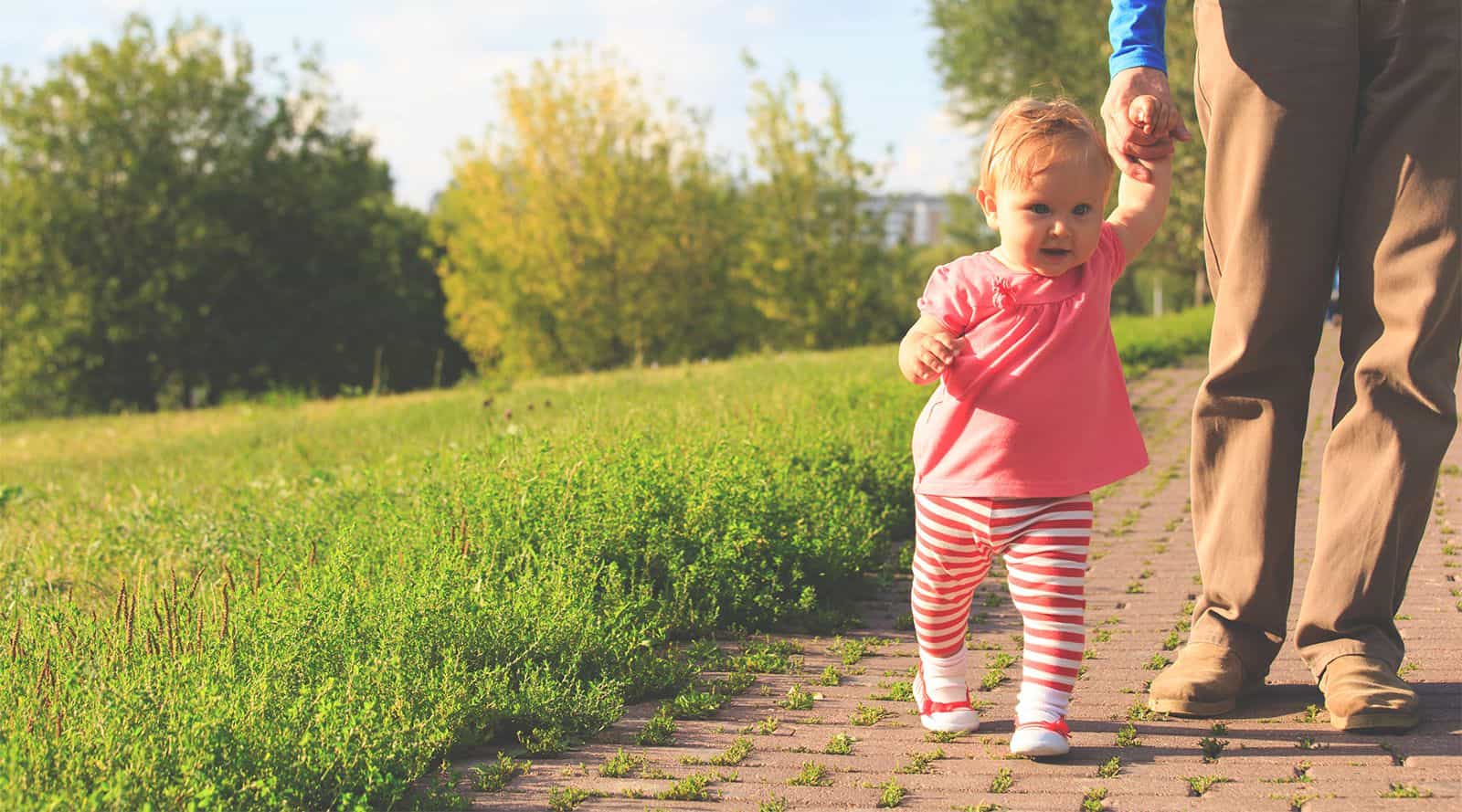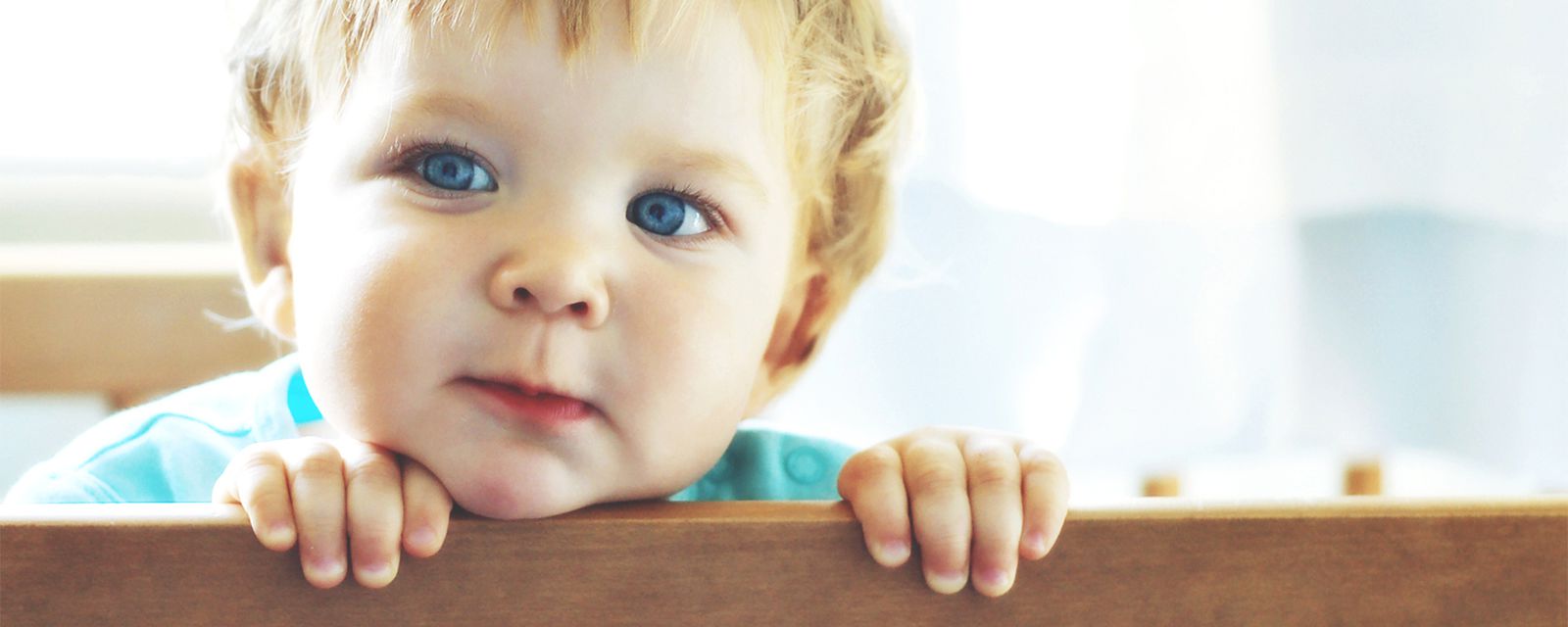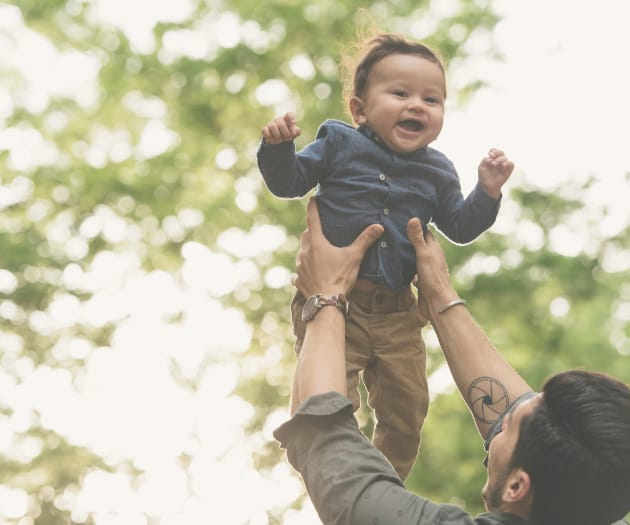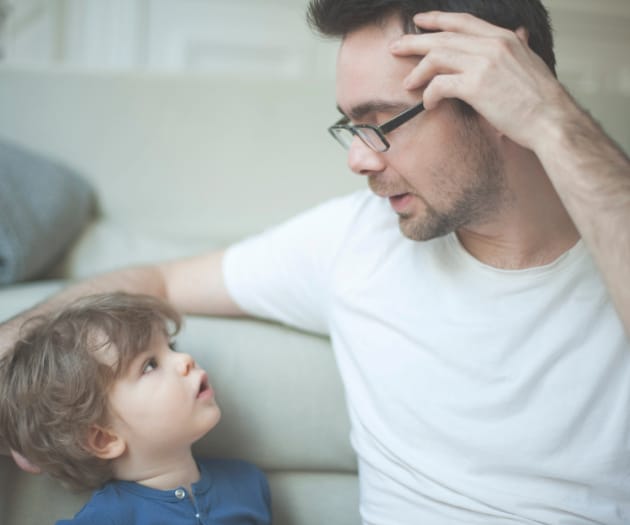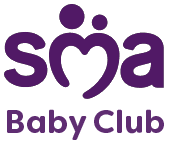At a glance
Toddlers usually take their first steps between nine and fourteen months. There are always exceptions though
Up you get. Encourage them to pull themselves up and ‘cruise’ to build confidence and core strength
Smiles, claps and hoorays. These are the best incentives for your little one to start taking steps
Time to start padding your pad. Before baby’s cruising you may want to do a safety check for sharp corners or potential finger traps in the house
Eight steps to help baby walk.
-
The ‘sitting up all on my own’ stage
When baby can sit up without the help of a cushion or prop, they’ve taken their first ‘step’ to walking. Sitting will help strengthen the muscles they need when they learn to stand.
Age: 4-7 months
Top Tip: Roll a ball back and forth or play stacking games to help build their little muscles.
-
The ‘crawling on my hands and knees’ stage
The most important thing for baby to do at the crawling stage is learn to move their arms and legs at the same time. A crucial skill when it comes to walking.
Age: 7-10 months
Top tip: Help baby develop these areas by having them crawl from one side of the room to another. Place a toy on a chair to encourage them to pull themselves up to get it. Then be ready to give them a well-deserved round of applause.
-
The ‘pulling myself up’ stage
As baby becomes stronger and more curious, they’ll start pulling themselves up using the sofa, a coffee table or even your legs. This is when you can start working on balance and getting them familiar with the standing position.
Age: 7-9 months
Top tip: Help baby pull themselves up, then show them how to bend their knees to get back down. This will ease any falls when they start taking steps by themselves.
-
The ‘walking with help’ stage
As baby starts to pull themselves up and gain balance while holding your hands, help them take a few steps. This will give them confidence to take those first steps independently.
Age: 8-9 months
Top tip: Your smiling face and enthusiasm are the best ways to motivate your apprentice walker. Try kneeling down a few feet away, holding out your arms, smiling and encouraging baby to walk towards you.
-
The ‘check me out I’m cruising’ stage
Cruising is when baby starts using walls and furniture to get around. As they become more mobile make sure your home is baby-and-toddler-friendly. For help, try our baby and toddler-proofing tips.
Age: 8-9 months
Top tip: Encourage baby to become more confident while cruising so they feel able to let go of the wall or furniture. Just make sure they have a soft landing spot.
-
The ‘look I’m standing’ stage
Balance is a key part of walking. If baby can stand and balance for a few seconds they’ll soon feel like taking a step. Thank goodness for nappies because there will probably be lots of falling onto bottoms.
Age: 9-12 months
Top tip: Turn balancing into a game. Sit with baby on the floor and help them stand up. Then count how long they remain upright before plonking back down on the floor. Lots of praise after each try of course.
-
The ‘Oh look! They’ve taken their first steps’ stage
The first steps are monumental moments for your little one, so make a big deal out of them. Walking is all about confidence so everything leading up to those first steps needs plenty of praise and encouragement.
Age: 9-12 months
Top tip: Come down to baby’s level. Cheer on those first steps sitting on the floor and slowly guiding them along. As they gain balance let them walk on their own.
-
The ‘walking, stumbling and bumbling’ stage
It may take a few stumbles before they’re really on the move. Keep cheering baby on as they explore the power of walking. Some babies prefer to crawl and may do a funny crawly walk before they are properly up and walking or, depending on the baby, up and running.
Age: 12-15 months
Top tip: Encourage baby to walk as much as possible. Pick them up less often. When you do, put them back down in a walking position instead of on their bottom.
What if my baby isn’t walking by 15 months?
For babies to develop at different rates is normal, and there’s usually nothing to worry about. Each baby learns skills in different ways. Some babies bottom-shuffle early and walk late, others crawl and then walk, and some miss out crawling completely.
Did you know the rate at which baby learns to walk is often inherited? So, if you or your partner walked late, your baby might too.
Give them time, even up to 18 months before walking is considered normal. If they’re late walkers encourage them to practise every day and remember not to carry them too often – it’ll do them (and your back) a favour in the long run.
If you’ve reached 18 months and baby still isn’t showing signs of walking, you can always talk to your doctor. They may refer you to a trained professional who can check baby’s posture, muscle tone and reflexes.
If baby was born early (before 37 weeks of pregnancy), they will be developmentally younger than their age. It might seem that they’re reaching this and other milestones ‘later’ than others but in fact, they’re on schedule for their due age.
We all learn to walk in the end, so try to be patient and keep worrying to a minimum.
Make a note of all your mini-me’s milestones with our Mother of all Checklists.



